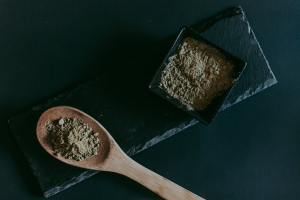How Cannabis Chefs Elevate Edibles Recipes Beyond Brownies
When asked what foods would they infuse with weed, people gave a variety of answers – mac and cheese, fried chicken, even a stake. It is obvious from these answers that marijuana edibles present an industry field that offers plenty of opportunities for experiments.
It’s true that the state regulations are still evolving, but that is precisely what creates this opportunity – cannabis chefs can learn about the rules, play by them, and pave the way by mastering this new industry. Cooking with cannabis is close to becoming a discipline of art that goes way beyond brownie recipes. As mentioned on 10buds website, cannabis chefs are finally stepping into their roles as valued chefs at marijuana-focused restaurants“.
Having a Good Time Together
The popularity of cannabis cuisine has grown among connoisseurs and casual consumers alike, and its place in the mainstream is finally established. Even the more conventional audience has accepted the narrative of marijuana normalcy, delivered to their homes via entertainment and media. By now edibles have become a part of a variety of shows such as Vice’s, Bong Appetit“ which viceland website describes as, the competition where high-end cuisine meets high-end cannabis“. Making and serving some tasty edibles has become a way to make everyone having a good time around the dinner table.
Sticking to a Starter Dose
When cannabis-infused edibles are concerned, a common low-dose standard is 5 mg of cannabis per serving. While this may seem unreasonably low for someone, it actually isn’t since this is a perfect starter dose for newbies. Since the point of this cuisine is to spice up social settings such as parties, chefs usually tend to make easy-to-make and alluring small bites that will last the whole night. Now, when a lot of different people have access to tables filled with peach-ginger float, spiced superfood truffles, duck sliders, corn dog muffins, roasted grape crostini, etc. it’s quite normal that you can’t control the portions. This small dose is easy for cooks to control and it enables people to try multiple portions. It’s a perfect start since nonsmokers are usually able to feel some sensation from it.
Of course, chefs are aware that not even this starter dose allows people to munch edibles the whole night. That’s why they also make non-infused versions of the recipes and serve them for the munchies afterward. They also label all the foods they set out, just as bottles have labels which show alcohol content. It is an important precaution in case someone decides to open the refrigerator and grab the wrong thing.
Knowing The Audience
Since it sounds a bit sciency, the process of decarboxylation is what cooks tend to fear sometimes. But it’s actually a quite simple process everyone can do at home, as shown on leafy website. Not only that but if you want THC, it’s a necessary one. If you skip it your marijuana will simply remain THCA, meaning non-psychoactive. Heating cannabis at any point will convert it to THC, but it doesn’t lead to as much extraction and the full THC potential. Of course, there’s nothing wrong with having a THCA-rich infusion and using a non-decarboxylated flower. The point of edibles is not always getting high off the THC, so it’s perfectly natural to cook with medicinal elements of the plant. That’s why for the chefs it all comes down to knowing their audience.
For example, if they’re cooking for the party, they’ll definitely go with the Sativa strains because these uplifting flowers won’t produce a bunch of couch potatoes. If they’re cooking for someone in need of medicinal uses, they’ll use the Indica strain. Even if their goal is THC, they’ll still use non-psychoactive CBD strains and serve them toward the end of the meal. This is a clever precaution to counter the possible bad effects of eating too much THC.
As you can see, cannabis chefs have it all covered, and some of them are not stopping at small bites. They’re hosting home dinner parties with dishes such as potato soups or lamb chops, adding light THC or CBD oils to dishes before servings. But since being an off-site caterer is a complex thing not many are going this extra mile. Those that do are doing business in a legal grey area since they don’t have a license to actually sell the drug – dinners usually provide their own marijuana so they’re never directly paying for THC. But with the wave of legalization spreading so are the so-called ʽsocial consumption sitesʼ and the chefs are certainly equipped with recipes that will make our taste buds explode.


![How to Easily Decarb Marijuana [Updated for 2023]](https://i0.wp.com/originalweedrecipes.com/wp-content/uploads/2014/09/pot-leaf.jpg?resize=140%2C130&ssl=1)